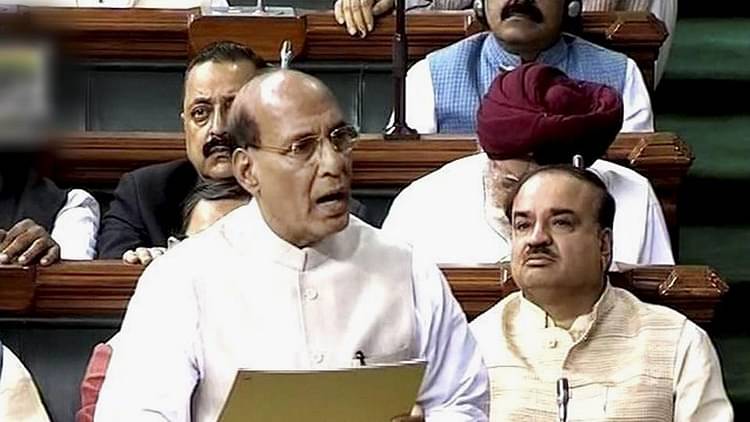Defence Minister Rajnath Singh informed the Rajya Sabha last week that after nine rounds of talks with the Chinese side, “we have now been able to reach an agreement on disengagement in the North and South Bank of the Pangong Lake.” The agreement was that the Chinese side would keep its troop presence in the North Bank area to east of Finger 8. Rajnath clarified that “Reciprocally, the Indian troops will be based at their permanent base at Dhan Singh Thapa Post near Finger 3”
To add to the anxiety of the people, Rajnath said: “It was our view that troops of both sides, who are now in close proximity, should vacate the forward deployments made in 2020 and return to the permanent and accepted bases.”
It is known to the entire world that in a demonstration of their great valour and fearlessness, the Indian Army captured a number of strategic hilltops in a daring operation during the night of October 29-30. The operation turned the tables on the Chinese. From those hilltops we could maintain round-the-clock vigilance on the movement of Chinese infantry and artillery columns, tank regiments and missile batteries.
As the Defence Minister told the Rajya Sabha: “Many strategically important points were identified and our troops positioned themselves in those hill tops and at locations which were very important from our point of view.” Indeed, we were on top and they were below us. The Chinese were insistent that we vacate these hilltops. Have we given in to the Chinese? There is no clear and categorical answer to this question.
During his speech in Rajya Sabha, the Defence Minister gave details of Indian territories occupied by the Chinese: approximately 38,000 sq.kms. in the Union Territory of Ladakh. Pakistan has also ceded to the Chinese 5,180 sq. kms of territory in PoK. China has also claimed approximately 90,000 sq. kms of territory in Arunachal Pradesh which it calls “southern Tibet”.
The Chinese policy has been clear throughout: occupy chunks of Indian territory, hold on to them and from that advantageous position engage in hard bargaining with India. They intrude, say, ten kms inside Indian territory and then, in course of negotiations, gracefully agree to withdraw two kms within Indian territory illegally held by them while we, as a reciprocal measure, agree to withdraw two kms in our own territory. It is a ‘tails you lose, heads we win’ policy. Rather two steps forward and later one step backward, thereby keeping the advantage.
The Indian stand should be that you (the Chinese) vacate all the land you have occupied while we remain in firm possession of our land. Indian troops should not “withdraw” in Indian territory.China has been repeatedly asking India to “de-link” the border issue from all other bilateral issues. In plain language it means that while the Chinese sneak into our territory and sit tight there, India engages China in pleasant talks about economic cooperation and other issues of mutual interest. This is the Chinese policy. Military aggression against India should go hand in hand with talks of cooperation in other fields.
None except the most gullible will believe that the so-called agreement on disengagement in Ladakh will end China’s hostility to India. The India-China relations have to be seen in the larger context of China’s global policy which is to become the sole global superpower by supplanting the United States in the next three or four decades. Even American strategic experts are talking about this. The Chinese Navy is already bigger than the US navy.
To become the sole superpower in the world, China will first have to establish her complete domination of Asia. And India is the biggest obstacle to that grand dream. So, India will have to be militarily humiliated, economically left far behind and its unity and integrity weakened.
China’s imperial ambitions have to be thwarted In order to contain China, India should actively develop military cooperation with the small countries of Asia and try to bring them into a joint security architecture to counter China. If we fail to do this, China will try to turn all our neighbours against India.
The recent coup in Myanmar is an ominous development. China’s tongue-in-the-cheek reaction to the Myanmar Army’s snuffing out of the nascent democracy in that country speaks volumes. Nepal’s sudden intransigence against India has also to be taken note of. The disengagement in Ladakh is just a passing (and temporary) phase in a far bigger drama that is unfolding.

























































































